
Excerpted from TIME’s Star Trek: Inside the Most Influential Science-Fiction Series Ever. Available at retailers and at Amazon.com.
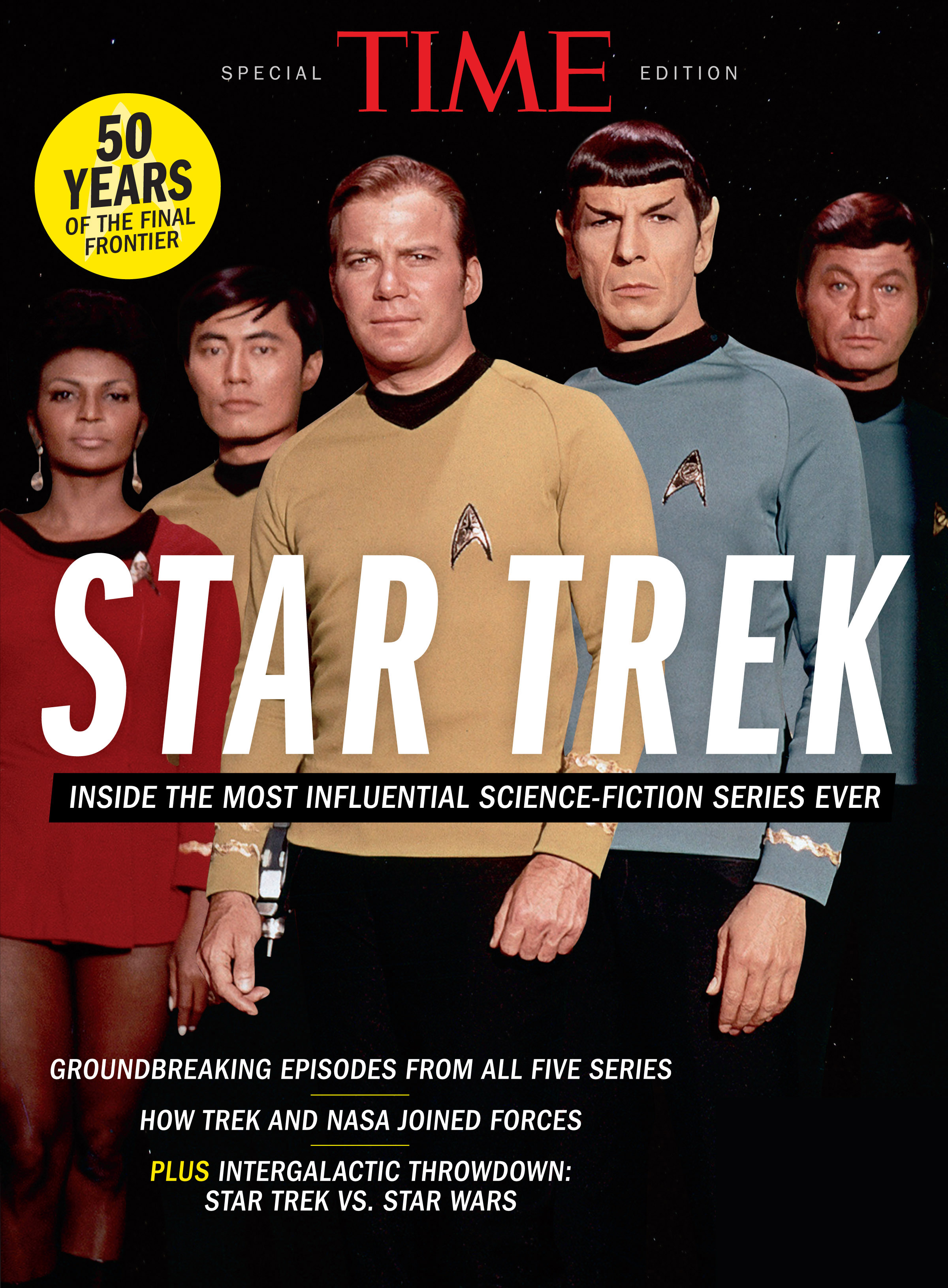
Since the time of the Greek philosopher Anaximander, humans have gazed up at the heavens and wondered: Is anyone else out there? For some, the idea that we might be the most advanced beings in all of creation offers a sense of supremacy. Others find it a lonely thought.
Reality has yet to offer a conclusive answer one way or the other, leaving our imaginations to run wild. If aliens do exist, what might they look like? How would they behave? And crucially: Would they be friend or foe? Thinkers no less great than the physicist Stephen Hawking have warned of the latter possibility. “If aliens ever visit us, I think the outcome would be much as when Christopher Columbus first landed in America, which didn’t turn out very well for the Native Americans,” Hawking remarked in a 2010 documentary on the subject.
Thankfully for the curious among us, science-fiction writers have stepped up to fill our imaginations with myriad possibilities.
Their creations have extended far beyond the archetypical “little green men.” H.G. Wells’s 1898 War of the Worlds, widely hailed as an exemplar of the genre, gave us terrifying Martian invaders and their tripodal death machines. The Day the Earth Stood Still (1951) offered Klaatu, who visited Earth to urge humanity to end our warlike ways. And of course there was E.T., the disarmingly cute alien simply in need of a ride home.
But nothing in science fiction has contributed to the depth of the extraterrestrial encyclopedia like Star Trek. From the Bajorans (a proud people struggling to recover from another species’s hostile occupation of their world) to the Tamarians (a seemingly incomprehensible race that turns out to communicate through mythology and metaphor), Star Trek’s writers have dreamed up nearly 300 different alien species and counting, according to the fan website Memory Alpha. And that’s just the humanoids.
How can one franchise spawn so many aliens—and so many memorable ones, at that? Necessity, as they say, is the mother of invention. Science fiction typically uses spaceships, death rays and time travel as devices to offer ominous warnings about the ways humanity can go awry. Star Trek creator Gene Roddenberry flipped that script, introducing to a 1960s audience a future in which an interated cast of humans (and, just to drive the point home, one actual alien) work together to better understand their universe.
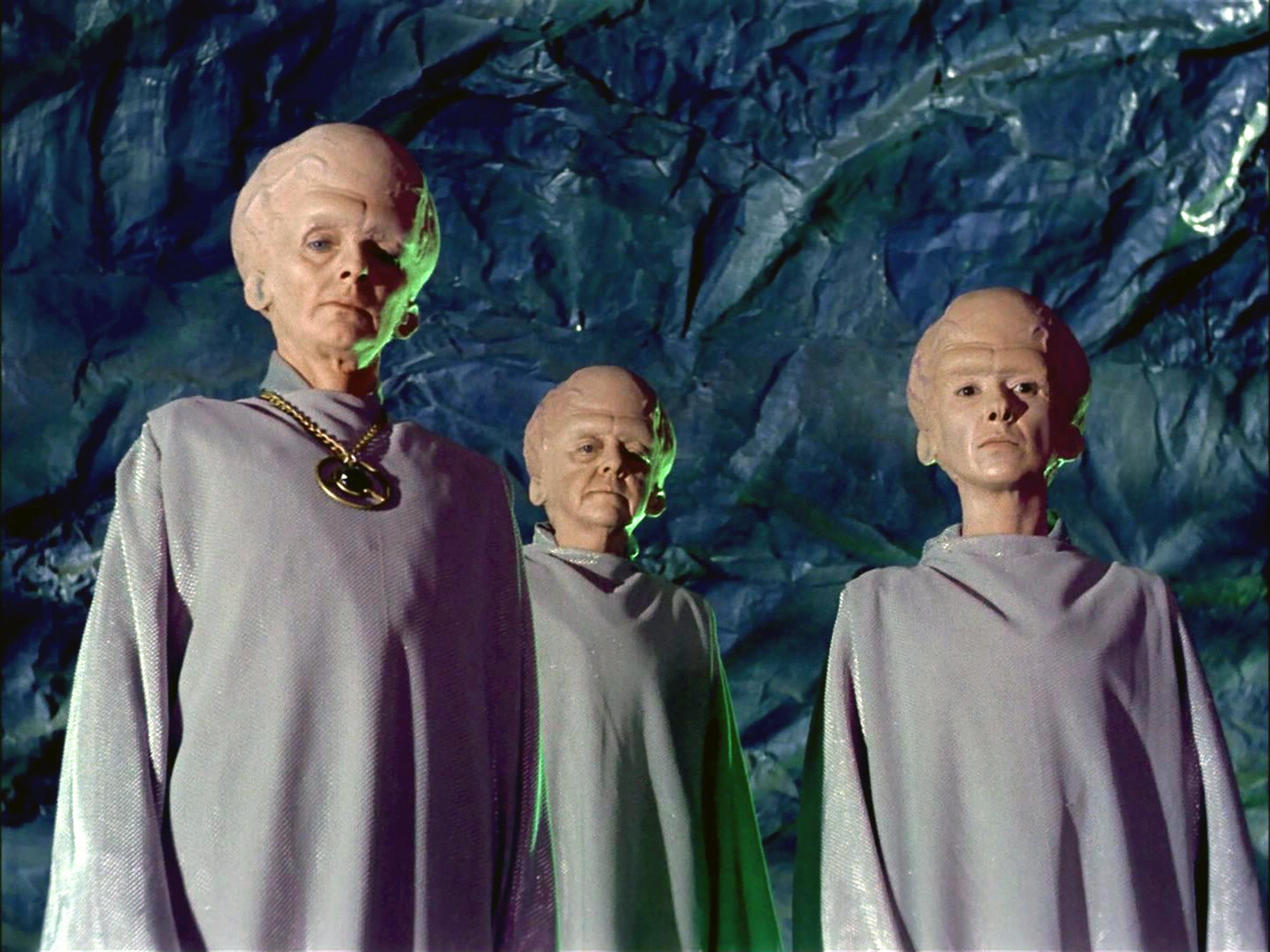
That utopian vision was essential to Trek’s DNA, but it was also a tremendous challenge for one group of people: Star Trek writers, who faced the daunting task of writing stories in which the main characters all got along just fine.
“Gene was very big on not wanting to create conflict among the characters on the show,” says Rick Berman, who led the Star Trek franchise after Roddenberry died in 1991 until 2005 and produced several series and feature films. “He felt that humans, especially Starfleet humans, had evolved to a point where he didn’t want to see conflict between them.”
Yet conflict is at the core of all great storytelling. So if the Enterprise crew couldn’t squabble with one another, Star Trek writers had to find friction elsewhere. Aliens came to the rescue. “Often we were telling stories of how humans had progressed, or not, in the far reaches of space,” says longtime Star Trek writer D.C. Fontana. “But sometimes the theme of the tale was better told by demonstrating how aliens approached or solved problems, or how they failed.”
Things got off to a rocky start. Putting aside Spock—a full-fledged member of the Enterprise crew—the first extraterrestrial to appear on Star Trek was a C-list monster that could have been pulled from any bad ’50s sci-fi flick. A shape-shifter with a serious salt craving, the nameless creature killed off Enterprise crew members by sucking the sodium out of them. The so-called “salt vampire” wasn’t a big hit. Thankfully, matters improved from there.
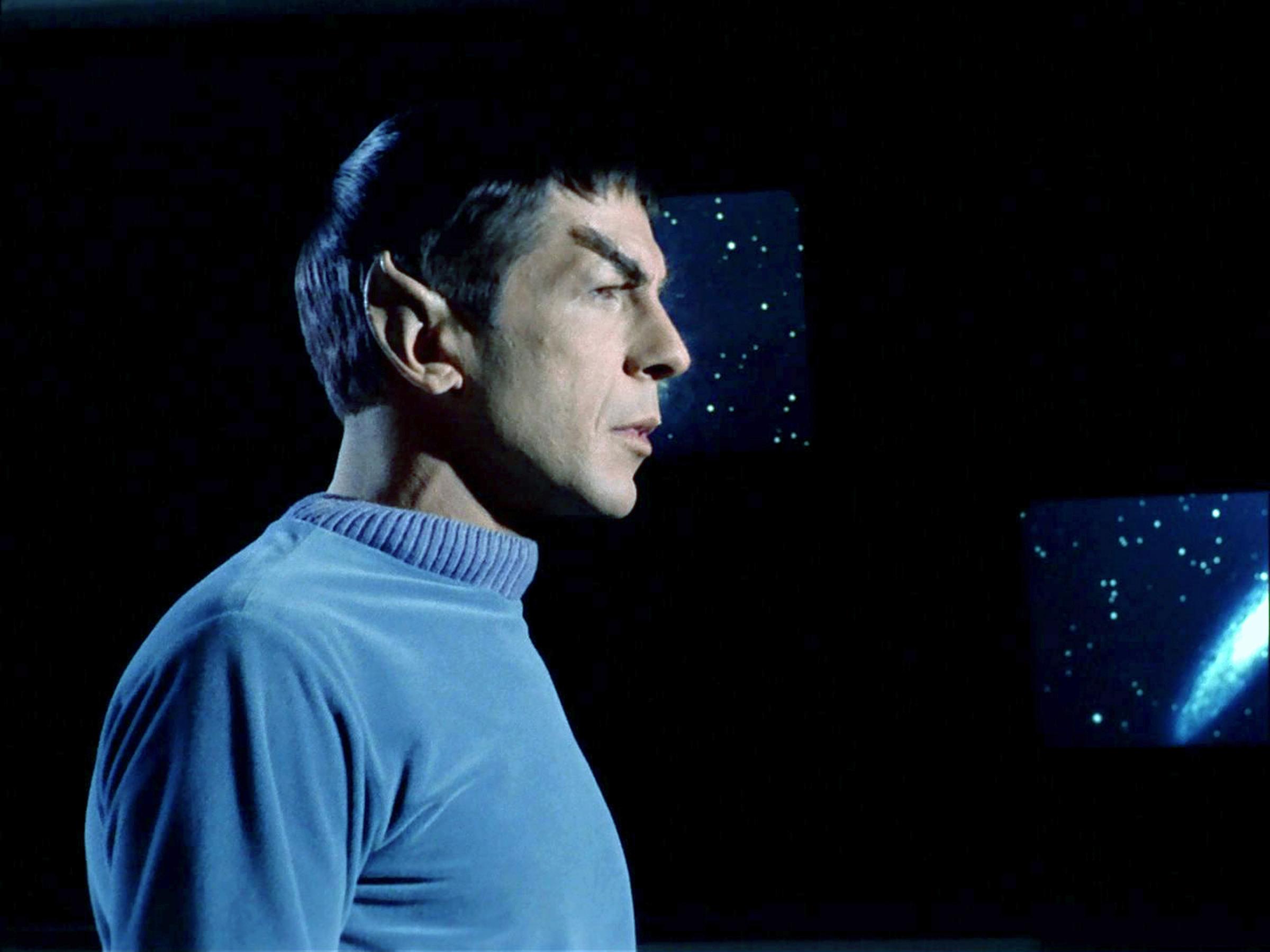
Humans are complex creatures, capable of being logical, tactical, aggressive, greedy and lustful all in a single one-hour episode. But Star Trek aliens are typically guided by one prime mover. Often it is some trait shared by many people. A desire for conquest, perhaps, or the pursuit of wealth or the urge to protect one’s offspring. That made them a thinly veiled stand-in for whatever driving force they represented, giving the writers a way to craft stories that were less about aliens and more about us. Simply put, Star Trek aliens are a mirror in which we see the best and worst of ourselves—and one in which we see that we’re not as different from one another as we might think.
“The concept of having aliens on a week- to-week basis, sometimes new, sometimes ones that the audience was familiar with, gave the writers the ability to represent all the different qualities of humanity,” says Berman. “Whether it’s avarice or whether it’s a hive-like mentality or whether it’s emotions or whether it’s a desire to be more human, these were all qualities that the aliens allowed us to play with. We could not have done the show without that.”
Case in point: In the third-season Next Generation episode “The Survivors,” Capt. Jean-Luc Picard and his crew find a couple who appear to be the only survivors of an attack on a Federation colony. But when they are offered safe harbor aboard the Enterprise, they refuse, insisting they be left where they were found. It’s an odd request, given their situation. A series of other strange happenings, such as a warship appearing to drive the Enterprise away from the planet, convinces Picard that something is amiss with the pair, who are named Kevin and Rishon Uxbridge. Picard is eventually able to trick Kevin into revealing the truth: he’s not a human but a member of an all-powerful species called the Douwd. Kevin admits that he created a fictional version of Rishon after she was killed in an attack by a murderous race called the Husnock. What’s more, Kevin, who considers himself a pacifist, reveals that in his rage over losing his wife, he killed the Husnock. And not just the Husnock who attacked his world but all of them, everywhere in the universe.
Kevin’s reaction is perfectly “human.” Who hasn’t wished ill will on those who do us wrong? The difference, of course, is that Kevin has the power to satisfy his rage to a horrific extent. Picard, typically motivated by justice, admits that the Federation has “no law to fit” Kevin’s crime, instead letting him live in exile on the planet. The captain concludes, “We leave behind a being of extraordinary power and conscience. I am not certain if he should be praised or condemned. Only that he should be left alone.”
With the possible exception of Spock and the rest of the Vulcans, Star Trek’s best-known aliens are the Klingons. A ruthless warrior race obsessed with battle and honor, the Klingons originally served as a two-dimensional foil for Kirk and company. Many have viewed them as a bellicose stand-in for the great space-race enemy of the original series’ era, the Soviet Union. But so popu- lar have the Klingons become over the decades that theirs is the most widely spoken fictional language in the world, according to Guinness World Records. (Take that, Lord of the Rings fans.) There’s even an ongoing copyright battle over who owns the Klingon language, which has generated some of the more entertaining legal briefs of our time.

At least some of the credit for that popularity is due to actor Michael Dorn, who played the Klingon bridge officer Worf in The Next Generation. That series took the original, more-cartoonish Klingons and gave them depth and relatability. Klingons, as it turns out, are a lot like us. The Klingons are warmongers, like some humans. The Klingons are obsessed with rituals, like some humans. The Klingons are driven by a fierce dedication to their family, like some humans. One of Star Trek’s best Klingon stories came in “Sins of the Father,” a third-season Next Generation episode in which Worf’s late father is accused of treason. As much as it pains him to do so, Worf decides to shoulder the blame in accordance with Klingon custom, despite his father’s innocence, a move that will help preserve the Klingon Empire’s political status quo and keep the empire from spiraling into chaos that could ultimately harm millions. It’s a deeply human story, a meditation on family pride as much as it is a revealing look into the intricacies of Klingon politics.
If the Klingons were Star Trek’s original villains, the Borg were the show’s best. A technologically advanced race of cyborgs, the Borg are bound together into a hive mind called “the Collective.” Just looking at the Borg, a terrifying hodgepodge of man and machine, is enough to send shivers down your spine. But the real terror lies in their motivation: intergalactic racial purity. When the Borg encounter a new species, they either add it to the Collective through forced “assimilation” or simply kill it off.
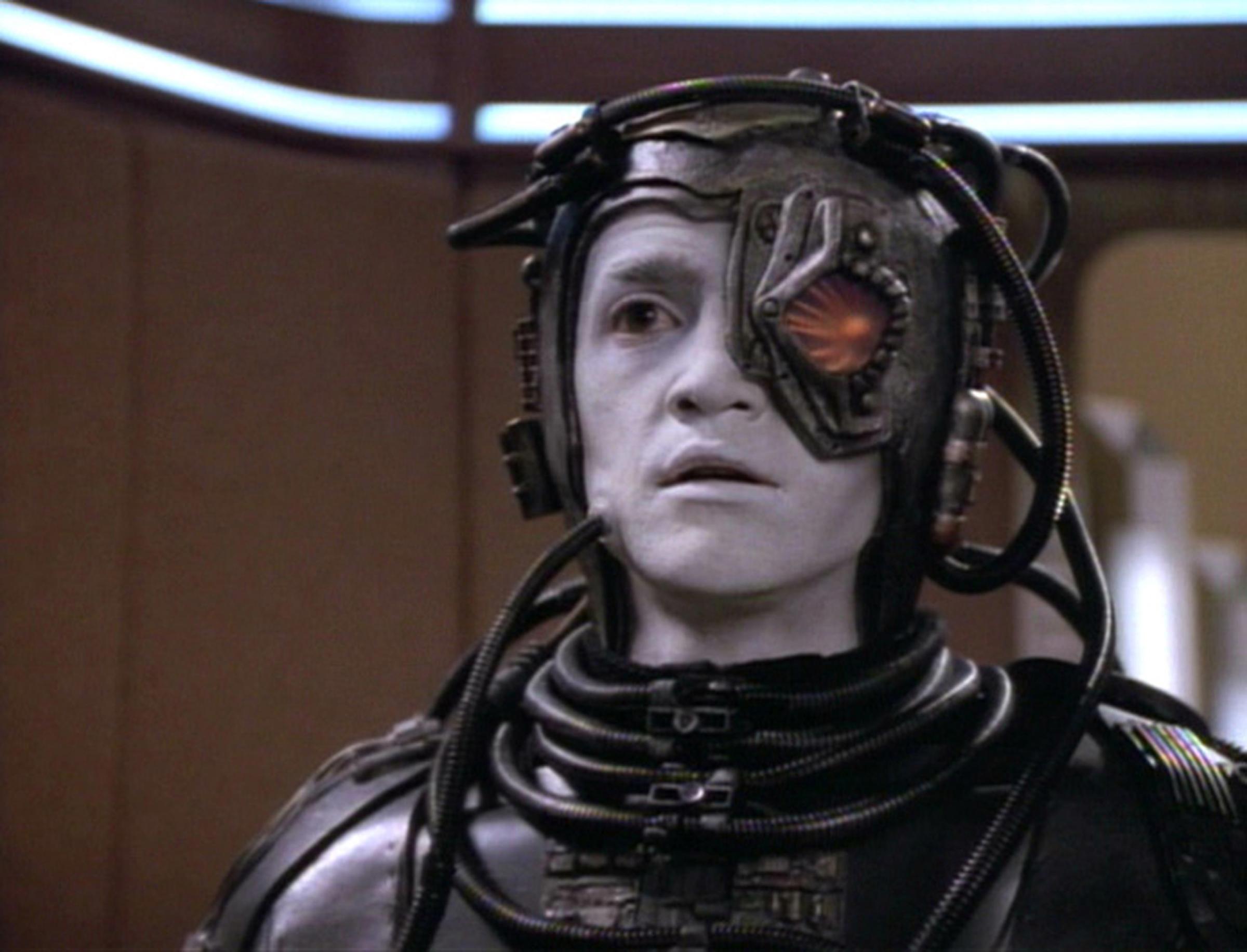
It’s unclear which is the worse fate. In part, Star Trek is a celebration of humanity’s individuality. The Borg are everything Trek’s humans are not: obedient, robotic, conformist. So great is the fear of assimilation that in the Star Trek film First Contact, an Enterprise crew member who’s going through the horrific process begs Capt. Picard to kill him out of mercy. Picard—who had once been assimilated himself but was saved in a daring rescue by his crew—obliges. “The concept of being assimilated was terrifying, because it seemed like you had no control over it and no ability to combat it,” says Jonathan Frakes, who played Star Trek’s Cdr. William T. Riker and directed First Contact as well as Star Trek: Insurrection.
The Borg, who first appeared in a 1989 episode of The Next Generation, are typically considered a commentary on fascism and racial cleansing. But in a sense, they are aliens posing questions we didn’t even realize we would soon be facing. Can we real-world humans be addicted to constant connectivity through our smartphones, as the Borg are to the Collective? (Cut a Borg off from the hive mind, and the alien’s nonplussed reaction is not unlike that of a teenager stripped of an iPhone.) Does social media give us a platform on which to connect with others to enhance our common understanding, or does it create a hive mind that rejects unpopular opinions, as does the Collective? Should we enhance our physical and mental capabilities with technological implants, as the Borg do? Watch the Borg stories with these pressing questions in mind, and they only become more fascinating.
Given the prominence of races like the Klingons and the Borg, it might seem as if Star Trek’s aliens are almost always villains. That’s far from the case. The greedy Ferengi, introduced early in The Next Generation, were intended as such at first. But fans considered them too silly to be a serious threat. Instead, the Ferengi soon turned into walking, breathing commentaries on the advantages and flaws of unbridled capitalism. If Donald Trump were a Star Trek alien, he would be a Ferengi. They’re driven entirely by making money; they always want the better part of the deal. (They also happen to be some of the most sexist creatures in Trek: they outright ban women from business, though their society undergoes reforms as their story line progresses.) These characteristics put them in stark contrast with Star Trek’s humans, who work not for money but “to better ourselves and the rest of humanity,” as Capt. Picard once put it.
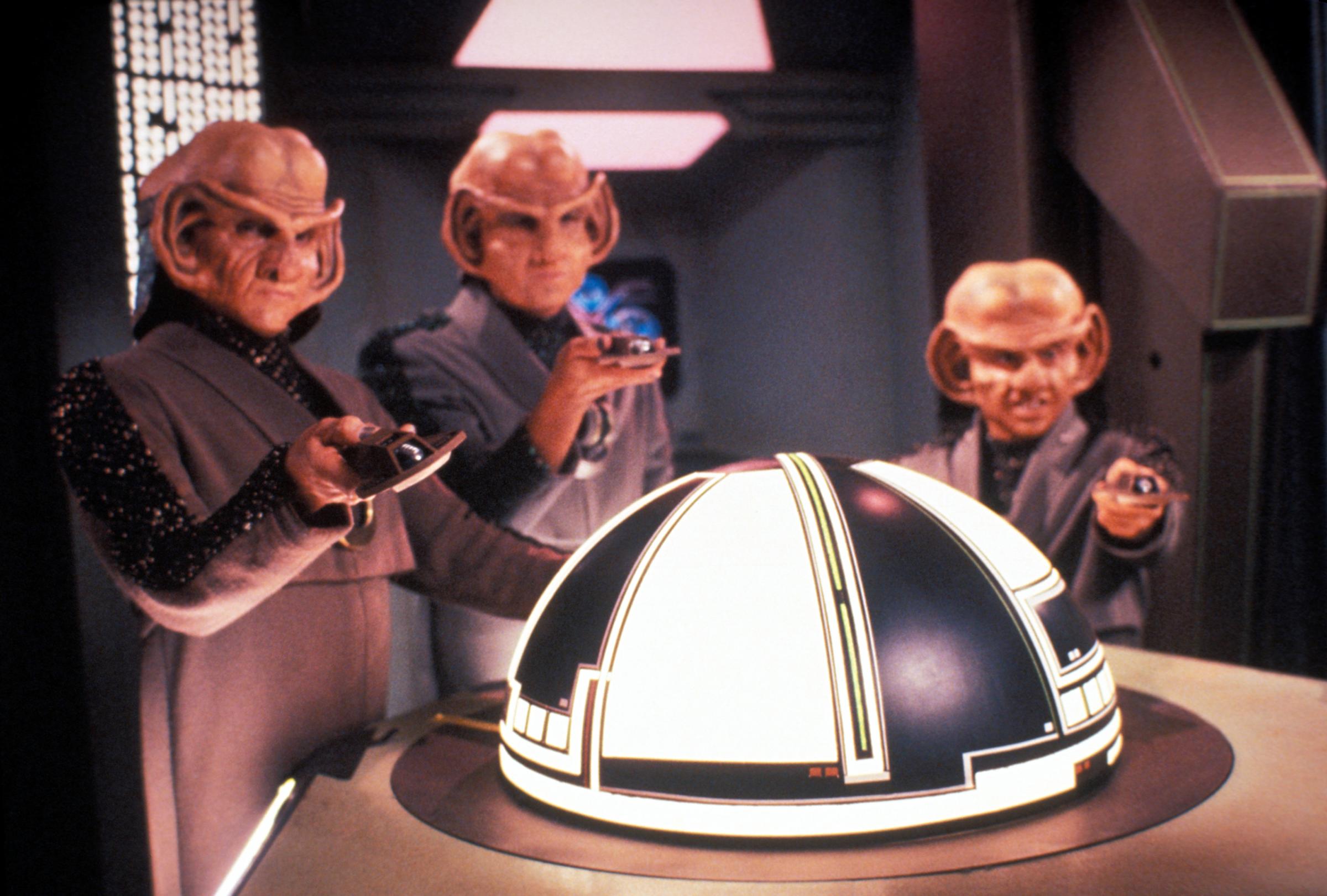
Star Trek’s quintessential Ferengi was Quark, a seedy intergalactic businessman and bartender who was brought to life by actor Armin Shimerman in Deep Space Nine, the franchise’s third television series. Quark often quoted from “the Rules of Acquisition,” a sort of Ferengi guidebook that could double as Gordon Gekko’s personal manifesto. Example rules include “Never place friendship above profit,” “Never allow family to stand in the way of opportunity” and “War is good for business.” But Deep Space Nine’s writers went beyond using Quark as a mere punching bag for Wall Street. In the season-three episode “The House of Quark,” for instance, we see him use his business-like cunning to escape certain death in a duel with a Klingon. The lesson? Sometimes greed is good.
Star Trek writers were skilled at constantly adding depth to the aliens who reappeared through the series. Just as the Klingons’ belligerence was leavened with stories about their love of honor, the warlike Romulans turned out to be literally related to the Vulcans—a glimpse at Trek’s most logical race with the worked only in pairs, providing a lesson about the power of cooperation. And Star Trek: Voyager’s “Year of Hell” offered the history-alerting Annorax, who aimed to use his time weapon to restore his people’s empire to its former glory but killed his own wife in the process, revealing the cost of stubborn pride.
On one level, Star Trek is a science-fiction show about a group of intellectually enlightened humans exploring the far reaches of the galaxy, all to better their understanding of their world. But the show is really about us, back here in the present day, and the common ties that bind us. What better way to show us we’re all alike than through the lens of outsiders? “Aliens are really important in science fiction because they give a little distance character-wise and story-wise so that you can actually have stories about beauty and youth and racism, and on and on and on,” says John de Lancie, who played Star Trek’s godlike character Q. “It puts it on the character of an alien to be able to say things that sometimes you can’t say straight out. I think the aliens in Star Trek and the aliens in most science fiction have a lot of value in that respect.”
More Must-Reads from TIME
- Cybersecurity Experts Are Sounding the Alarm on DOGE
- Meet the 2025 Women of the Year
- The Harsh Truth About Disability Inclusion
- Why Do More Young Adults Have Cancer?
- Colman Domingo Leads With Radical Love
- How to Get Better at Doing Things Alone
- Michelle Zauner Stares Down the Darkness
Contact us at letters@time.com